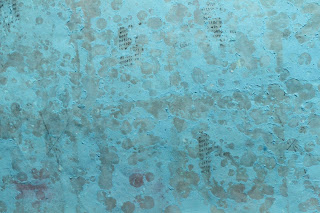Check out the latest review of and exhibition I part organized and exhibited in during July-
http://theavant.wordpress.com/2011/08/04/review-of-hours-the-ground-floor-gallery/
Review of hOurs @ The Ground Floor Gallery
hOurs @ The Ground Floor Gallery, Elysian Tower.
Review by Leslie Allen
hOurs is a response by the committe for the third year Crawford student show to the hours of planning, organization and construction that went into the production of an exhibition in the imposing unfinished space of the Elysian tower. The cavernous concrete space was elegantly transformed into a functional gallery space by the hard work of the third year students, yet still retaining the brutal industrial feel of an unused shell that is the white elephant of the Elysian.
Eight artists came together to produce installations, drawings, prints and sculptures that reflected their interaction and stuggle with the gallery space. A few pieces were recognizable from the third year show, such as Elliot Rainey’sRetro Gression. A room constructed from unfinished wooden panels, the centre contains a stool for the viewer to sit on, facing in either direction are two long vertical mirrors, which are angled in such a way as to encompass only the reflection of the structure behind, and to completely eclipse any trace of your own image. A simple visual trick, it is a disconcerting play on our expectations of mirrors as instruments of doubling. Instead of an infinite multiplication of your reflection, a human presence can only be glimpsed when approaching the centre from the side, once seated in a direct line between the mirrors your bodily presence vanishes. Mirrors become a tool of vanishing- reawakening the delight and astonishment that clear reflections produced with the invention of reflective glass- but here inverted to produce and opposite effect.
Fiona Creagh and Emily O’Flynn also chose to contain their work within discrete separate areas within the larger space. Each artist uses the gentle glow of a lamp to illuminate the dark corners of their individual spaces. Creagh’s layered monoprints of city scenes in evocative sunset hues make use of the low lighting and enclosed nature of the space to enhance the reception of her themes, of small square windows to the city. The plastic layers placed about a centimeter in front of the coloured prints, or surrounding the prints on four sides to create a three dimensional box, create the feeling of distance from the hazy views of city buildings and window lights, as if viewed from a distance, through double glazed glass at sunset. This intimacy of the enclosed space is also made use of by O’Flynn, who presents a series of black sketches in charcoal on cotton, the expressionist marks conjuring up half formed faces that bleed into the fabric texture of the cotton ground. The hazy light of the solitary lamp here creates a world of shadows that add dimension to the black and white images.
Other artists chose to interact more directly with the internal structure of the building. Maeve Lynch’s piece New Growth is perhaps the most successful intervention into the concrete space. Continuing her theme of hair growth, small tufts of merino wool protrude from cracks and cavities on the walls surface, interjecting an organic element into the dead man-made forms of the room. It is as if the unfinished concrete had suddenly begun to sprout a layer of fur to cover its cold greyness. I would have liked to see Lynch continue this growth around more surfaces of the space, rather than confining it to her own area of display.
The left-over plinths, number stickers and nails in walls that marked the remnants of the Ground Floor exhibition in June provided a unifying feature, connecting the disparate works which were for the most part confined to their own individual areas of the space. While this made evident the differences in approaches and concerns of the individual artists it also made the central theme a little difficult to grasp. Works as conceptually diverse as Rory Mullen’s Cart After Christy Brown and Fergus Dowd’s Untitled stacks of fruit, still in their supermarket packaging, placed on white plinths had little to unite them except perhaps a certain wry humour towards the hours of manual labour and consumption of food that must have gone in to the organization and production of a large collective show.
In all, hOurs demonstrates the diversity of personal responses that emerges out of an interaction with a space. The Elysian provides a presence of its own that complements the work of the artists. The show’s greatest strength is the subtlety and variety of artistic reactions to both physical environment and conceptual premise.



























